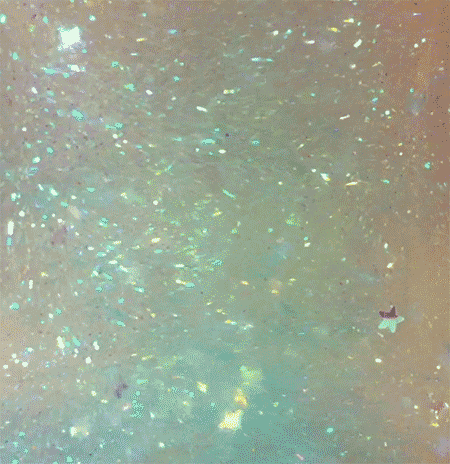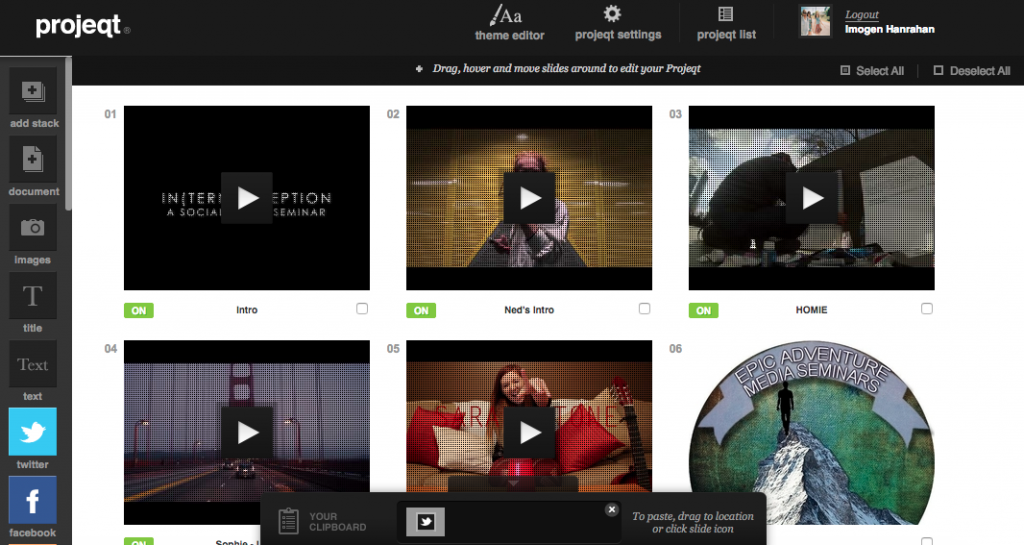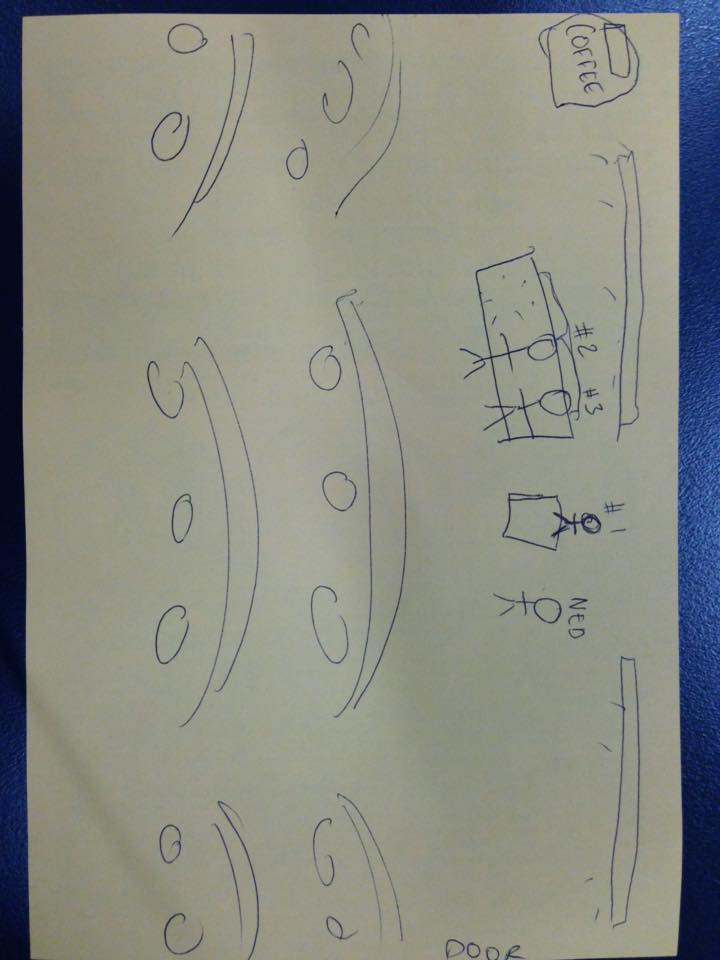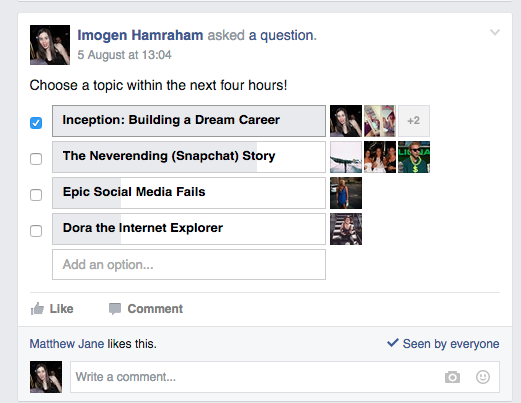Integrated media- Korsakow Film
FEAR AND HORROR
Georgina Pendock
Imogen Hanrahan
Georgia Grant
Mia Campion Curtis
“A glimpse into the world proves that horror is nothing other than reality”
-Alfred Hitchcock
Our Korsakow film, is an abstract piece, experimentally exhibiting the raw emotion of ‘Fear’. In our K film, we intend to strip down the concept of ‘fear’, and use our interface to project its main conceptual components. We have used quiet raw, graphic footage and archival clips in order to extract the pure emotion of ‘fear’ out of the viewer as they delve and interact with the interface. This is a “choose your own adventure, non-linear horror film. We ask the question, how long will it take for the audience to overcome their fear?
Whilst trying to decipher the true elements that sculpt the essence of fear, we had to delve into our own personal experiences to grasp a true understanding of the raw definition. After much deliberation, we came up with three structural component ‘clouds’ that we felt categorized the different types experiences associated with fear concisely; Supernatural Fear, unlikely feasible fear and everyday fear. Although we categorized three different concepts, our K film compounds the clips all together by ordering them by certain associations.
The footage that was compiled and edited in traditionally horror edit tropes were categorized under a cloud of ‘supernatural fear’. All these clips were possessed by a supernormal, melodramatic or gory film quality. This cloud therefore exists to serve the most non-naturalistic qualities and more stylized out of the three clouds. This is because contents of the clip contained supernatural elements and/or so sensationalized that the type of fear evoked from the viewer is stemmed from an irrational part of the human imagination.
There are clips of mystical monsters roaring, melodramatic horror torture scenes (eg: a horror dentist trip), supernatural imagery and abstract shapes, lighting & soundscapes that are not necessarily logical but stimulates fear. These subscribed to horror filmic elements that are created to illicit fear and suspense in the viewer. The clips under this cloud were founded archived footage from films of public domain off the Internet, due to the supernormal contents being difficult to film because of their unrealistic nature. Old horror films that were deliberately edited into shorter clips included are The Little Shop of Horrors (1960), Horror Hotel (1960), Horror Express (1972). There is also archived footage including “original footage” of Big Foot.
Some of the clips had the aspect ratio slowed down to give a stop-motion effect as the dialogue carried over the top, some had the original dialogue removed and sound effects added and some were edited so abstractly that only snippets of the clips were shown and acted like a strobe light as it cut back and forth to black. This was done deliberately so that it would provoke the audience into feeling scared and paralyzed by suspense.
The cloud category of ‘unlikely but feasible fear’ contains mostly archival clips incorporating content that were realistic, but very unlikely to occur in everyday life. Much like the ‘supernatural’ cloud, the contents on screen possess a type of horror, but unlike the supernatural the clips are perpetuating things that have actually taken place on earth and have been demonstrated to us via media platforms in Australia or transnationally. The types of clips include a video of an Atomic Bomb exploding with accompanying suspenseful music, Barren Army wasteland, A human being dragged to be executed with crowds of violet people, a gun being fired in a public area and a driver accidentally driving into a large engulfing fire. These clips all stem from the part of the human imagination that feed off information that is given to us through platforms such as media, books, and even politics.
The last category is the ‘everyday’ fear. This clouds clips consists of mostly filmed clips and some archival that project the irrational phobic parts of the human imagination that embed their illogical fears in our everyday psyche. These types of fears however irrational are more likely to confront us than those of the other categories. These types of fears might be considered not as ‘horrific’ to some, however other viewers will interact on a personal level with the stimulus due to their own individual phobias that permeate their lives. These clips include a clip of a bleeding scab, a clip of somebody injecting a needle, a claustrophobic clip of a small space filled with lots of people accompanied by uneasy chilling music, A clip of people hanging of buildings that a very high up and a stalker following a young lady home. All these clips were easily accessible to film as the contents were inspired by our group member’s fears & phobias that are embedded into their everyday life.
The eerie non-diegetic soundtrack runs over the entire film. It consists of white noise, thunder, screams, whispers, creepy girls singing and other loud noises. It is a traditional horror soundtrack, which allows the audience to feel as though they are inside a horror movie. The audience can move through their own non-linear horror film. The consistent horror music keeps the audience in suspense through the whole film.
All of these clips have the idea of fear and horror in common. Each clips is either original footage we shot ourselves or founded footage that has been edited in an artistic way to convey horror. An example of one of the associations would be the edited footage from The Little Shop of Horrors at the dentist when there are 2 men screaming at the dentist continuously. The clip keeps replaying, with the pummeling sound of the screams over and over again. This clip can be associated with other clips with a “man” for instance, so the audience might then click on the thumbnail of the woman running a man over with her car in the country. Then he screams. Even though driving and being at the dentist have nothing in common, that abstract association allows the audience to identify with the male character for instance and feel frightened.
Some other keywords are simply car, fire, inside, outside, supernatural, train, woman, zombie, medical, plant, hood, gun, shadow and more. The broad keywords mean that the audience participant will experience fear in a broad sense. One minute they’re scared about a zombie and then all of a sudden the participant will remember that they hate getting needles. In order to endure in our Korsakow film, the audience participants must overcome their fears, and discover that all their fears are the alike, as they will have the same effect on them.
Addressing Bjørn Sørenssen’s article on Alexandre Atruc’s theories on digital media, we wanted to give horror films a new aesthetic, in a new simple design where the audience can interpret the horror film their own way by participating. Horror films rely on the visuals, and Korsakow allows us to produce an avant-garde expression of visual and audible experience for our audience.
Our film consists of smaller SNUs, small montages within a non-linear narrative. As Bordwell and Thompson define narrative, we have “unconnected events” that take place within our film, such as the clip of the woman searching under her bed, and often “abstract entities” such as the dark, shadowy clip which represents being scared of the dark. Our film has no sense in “temporal dimensions” as there is no sense of time conveyed as the clips are shot during the day and night with no intention of creating time. However our film does satisfy one of Bordwell and Thompson’s criteria as part of the “formal and pragmatic dimensions”. Although there is no “casual chains that lead to closure” each clip is meaningful and relatable as they represent everyday fears and are “meaningful” if that participant has certain phobias (like scared of needles).
The interface layout is consistent through the whole K-film as we want the audience to focus more on the content instead of configuring around changeable layouts. There is a grey smog background with medium sized SNU screen and smaller preview thumbnails. This layout is predictable and easy to function, decorative but not too distracting. Although all the clips are frightening, they match the background, as they are basically all darkly lit and ominous just like the background. The theme of horror is consistent through the content and the interface.
This overall theme of fear and horror challenges the audience to push themselves to their limits by overcoming all their fears in order to continue to participate in it. The scary, eerie soundtrack serves as a purpose to sustain the horror feel. The clips are all abstractly linked together in a way to blur the lines between what is real fear and what is supernatural. The artistic way that the clips are sometimes edited gives an even more abstract idea of horror by following filmic techniques rather than blatant content. Although some clips are more realistic than others, the fear is the same.
Bjørn Sørenssen, 2008, Digital video and Alexandre Atruc’s camera-stylo: the new avant-garde in documentary realized?, Studies in Documentary Film Volume 2 Number 1, pp 47-59
Bordwell, David and Kristin Thompson, 2013, Film Art: An Introduction, McGraw-Hill, pp6-9






